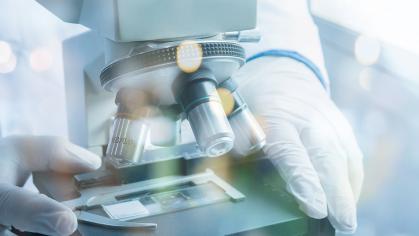Rutgers Signs Agreements to Advance Gene Therapy Research for Congenital Muscular Dystrophy with Santhera Pharmaceuticals
The fight against muscular dystrophy is now stronger as Rutgers University signs two agreements with Santhera Pharmaceuticals to advance pioneering research for the treatment of congenital muscular dystrophy.
The agreements – one licensing agreement and a research collaboration – complement the ongoing research of Peter Yurchenco, professor of the Department of Pathology and Laboratory Medicine at Rutgers Robert Wood Johnson Medical School (RWJMS) and a pioneer in a novel gene therapy approach for the treatment of LAMA2-deficient congenital muscular dystrophy (LAMA2 MD or MDC1A).

“Gene replacement is a promising therapeutic option for the treatment of LAMA2 MD. We have been working on continuously optimizing linker proteins engineered from extracellular matrix proteins which will aid in advancing such gene therapy approach towards clinical use,” said Yurchenco.
As a leading expert, Yurchenco’s strategy uses two linker proteins that are composed of domains derived from extracellular matrix proteins agrin, laminin and nidogen. The approach has led to the restoration of muscle fiber basement membranes in animal models as well as to the recovery of muscle force and size, increased overall body weight and markedly prolonged survival. The research demonstrates strong evidence for disease modifying potential.
“Santhera is excited to extend its collaborative network for this therapeutic approach, now including experts from Rutgers University,” added Kristina Sjöblom Nygren, MD, Chief Medical Officer and Head of Development of Santhera. “This will add value to our gene therapy program for LAMA2 MD and complements the work already underway with the Biozentrum at the University of Basel, which was awarded a grant by Innosuisse in 2019. Both of our collaboration partners have pioneered this field and will work closely with Santhera, clinical experts and the patient community to establish the best way to bring this approach to clinical use.”
Congenital muscular dystrophies (CMDs) are inherited neuromuscular diseases characterized by early-onset weakness and hypotonia alongside associated dystrophic findings in muscle biopsy. Progressive muscle weakness, joint contractures and respiratory insufficiency characterize most CMDs. Laminins are proteins of the extracellular matrix that help maintain muscle fiber stability by anchoring to muscle receptors and assembling a basement membrane through polymerization and extracellular protein binding. LAMA2-related muscular dystrophy (LAMA2 MD, also called MDC1A), is one of the most common forms of CMD. It is caused by mutations in the LAMA2 gene encoding the alpha2 subunit of laminin-211. Most LAMA2 MD patients show complete absence of laminin-alpha 2, are hypotonic (floppy) at birth, fail to ambulate, and succumb to respiratory complications.
Approximately 250,000 people in the United States are affected by different kinds of muscular dystrophies, according to the National Organization of Rare Disorders.



